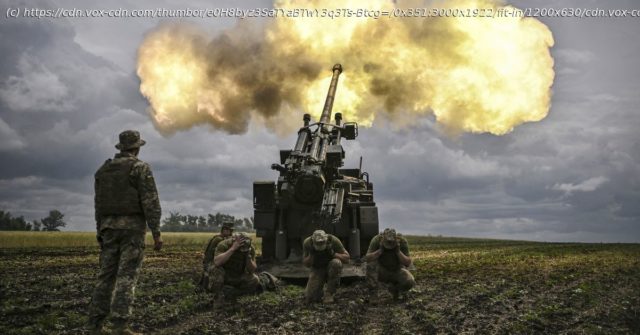How experts understand what’s happening on the ground in Ukraine — and what the war looks like six months in.
It has been six months since Russia invaded Ukraine, and it’s not obvious who’s “winning” the war.
The first stage of the Russian attack in February, a lightning thrust aimed at seizing Kyiv and decapitating the Ukrainian government, was a swift and humiliating failure. Stiff Ukrainian resistance forced the Russians to withdraw to the eastern part of the country, where their ambitions narrowed in the short term to a conquest of the Donbas region (much of which had already been controlled by Russian-backed separatists since 2014).
In the Donbas offensive, which began in late April, the two sides have been locked in an artillery duel — less rapid troop advancement and more firing shells and rockets from afar. This played to Russia’s primary strength, a numerically superior artillery corps, and led to high Ukrainian casualties and slow but steady Russian gains in the spring and early summer.
More recently, however, the momentum has started to swing back to the Ukrainian side. Western military aid — most notably an American rocket artillery system called HIMARS — has helped level the artillery playing field and wreaked havoc on Russian supply lines. Today, experts aren’t asking whether Ukraine will launch a counteroffensive aimed at retaking Russian-held territory, but when it will start and where it will focus.
Whether this means Ukraine is now “winning,” however, is a somewhat more complicated question to answer. We don’t know that the upcoming counteroffensive is likely to succeed; it depends on factors about which we have limited evidence, like Ukraine’s ability to conduct so-called “combined arms” offensive operations (ones that employ multiple components of military power simultaneously to accomplish a particular goal). Some important quantitative metrics, like the size of their respective ammunition stockpiles, are hard to estimate based on publicly available information. At this point, even leading experts on the conflict find it difficult to assess with real confidence who’s winning on the battlefield.
The broader strategic picture is less opaque — but only somewhat.
On one level, it’s been clear ever since Russia failed to take Kyiv that Russia was facing some kind of defeat. Nothing short of successfully seizing control of the Ukrainian state could justify the damage done to Russia’s military, economy, and international reputation. The invasion has already backfired on Russia, and its remaining battlefield efforts are focused on making the most out of a bad situation — to make sufficient gains that it could sell the war as a win to its population and the world.
But just because the war has been bad for Russia doesn’t mean that it’s a victory for Ukraine. The invaded nation has suffered grievous losses since the fighting began; a large swath of its east and south is currently occupied by Russia. Improving its postwar situation will almost certainly require more battlefield victories, ones that would leave Russia no choice but to give up many of its gains at the negotiating table.
So six months in, we know quite a bit more about what things will look like after the war than we did when it started. But there’s still a lot to be determined, and neither side is showing signs of backing down. There’s almost certain to be a lot more fighting ahead.How to assess who’s winning on the battlefield, and why Ukraine is poised to go on the offensive
Sometimes, progress in war can be approximately measured by territorial gains and losses. But in artillery duels like the current fighting in the Donbas, territorial changes are typically a lagging indicator rather than a leading one. So long as both sides maintain the ability to keep up the barrage, it’s hard for either one to make significant advances. Large changes in control typically happen after one side is exhausted — when they’ve lost so many troops, artillery pieces, and/or shells that they are forced to rapidly retreat.
“In a war of attrition forces are degraded gradually, but may then lose control suddenly, because they find themselves eventually placed in an untenable position,” says Michael Kofman, an expert on the Russian and Ukrainian militaries at the CNA think tank.
Instead of tracking territory, Kofman proposes a three-part test for assessing which side is winning:
For most of the conflict, Russia has had the initiative. Moscow launched the invasion and then forced Ukraine to mount desperate defenses of its major cities, including the capital Kyiv. Even after this assault failed, Russia was able to set the terms for the next part of the conflict — launching a new offensive in the Donbas region that forced a reactive Ukrainian defense.






